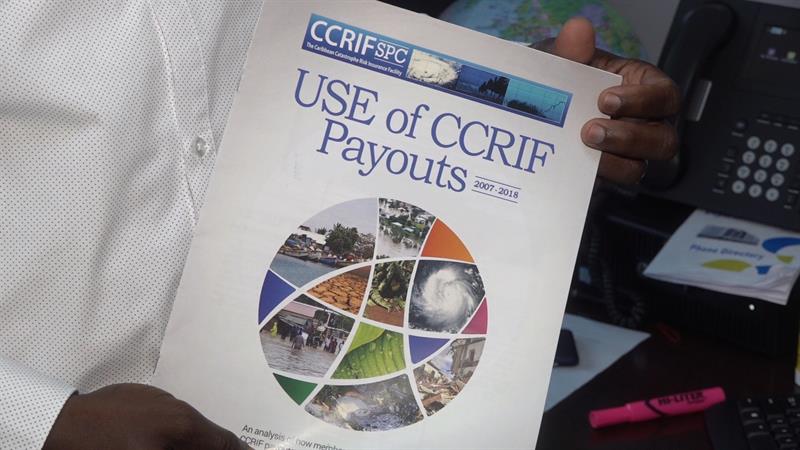INCREASED PREPAREDNESS MEASURES IN ANTICIPATION OF 2020 HURRICANE SEASON.
 The Deputy Director for Financial Administration in the Department of Finance, said COVID-19 has taught many lessons for disaster preparedness and disaster risk financing as government strategizes for greater financial stability in the event of a natural disaster during the upcoming hurricane season.
The Deputy Director for Financial Administration in the Department of Finance, said COVID-19 has taught many lessons for disaster preparedness and disaster risk financing as government strategizes for greater financial stability in the event of a natural disaster during the upcoming hurricane season.
Although the health and economic impact of COVID-19 has dominated discussions on mainstream and social media, the Government of Saint Lucia has been planning for the upcoming hurricane season which officially commences on June 1. Government, under its disaster risk financing policy has increased Saint Lucia’s coverage with the Caribbean Catastrophic Risk Insurance Facility (CCRIF).
Deputy Director for Financial Administration, Matthew Branford, said government has ensured that its disaster risk policy has been updated in keeping with a projected active hurricane season.
“We’ve actually increased our coverage because based on the various models for this year, they have increased intensity for the hurricane season and so we have actually been very cautious and have expanded our coverage. So, we’ve actually transferred more risk to CCRIF so that is can alleviate any fiscal pressures in the initial stage in the aftermath of a disaster.”
Branford noted that Saint Lucia has been a member of CCRIF from its inception in 2007 and has participated in the many disaster risk financing products offered by CCRIF which includes, tropical cyclone, excess rainfall and earthquake policies.
“In 2019 the CCRIF introduced what is called COAST and this product is specifically to assist in disaster risk financing for persons in the fisheries sector.”
The Deputy Director of Financial Administration highlighted, that one of the main concerns for government post a disaster is access to finance. This, he said is one of the significant benefits of CCRIF’s policies.
So CCRIF actually pays out within 14 days, coverage, to the Caribbean countries including Saint Lucia and we have benefited quite a lot from being a member of CCRIF in the Caribbean.”
Branford added that CCIFF is but one of the disaster risk financing strategies employed by Government to reduce its exposure post a disaster. He further called on citizen and the corporate sector to insure their property and belongings ahead of the hurricane season.
“It is always good that private individuals do try to secure their property, their homes and their personal belongs in the aftermath of a disaster because the policy that CCRIF offers to us is more of a capital nature, restructuring, rebuilding, and so on. It’s not going to be filtered right down to the local level and the house.”
Government is also exploring risk financing which takes into account health-related disasters, such as COVID-19, including disasters which could affect vital sectors such as water and electricity. The World Bank is among other agencies providing technical assistance and financing to St. Lucia in an effort to build resilience as it relates to disaster risk management.